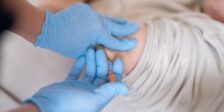
Most if not all industries require potential employees to undergo drug screening before employment. Some organizations also use random drug testing to screen workers for employment and insurance purposes.
Before, the most popular screening method was a urine test. The hair drug test is another reliable method that employers are opting for because of its accuracy and convenience. Though many people use hair drug evaluation widely, some individuals still know very little about it. Are you one of them? Do you have to go through one but need to learn the myths and facts concerning it? The post below has all you need to know about the test. Keep reading to learn more.
About Hair Drug Test
Also known as a hair follicle test, a hair drug test is all about screening for illicit drug use and the abuse of prescription meds. Investigators extract a small amount of hair from your head for the analysis using a pair of scissors. They then study the sample to detect any drug abuse indicators during the 90 days before the evaluation.
Researchers generally use a hair follicle test to detect the use of drugs such as:
- PCP (phenyl cyclohexyl piperidine)
- Methamphetamine
- Opioids (6-acetyl morphine, morphine, codeine)
- Amphetamine
- Cocaine
- Ecstasy
- Marijuana
Understanding the Outcome
There are three main results after a hair drug test: Inconclusive, negative, and positive. An inconclusive outcome is rare when investigators adhere to the testing procedures. In some cases, inadequate retrieval of the follicle specimen may lead to the rejection of the analysis. In such a scenario, the administrators often repeat the test.
Researchers can determine an adverse outcome within 24 hours of follicle extraction. They use an evaluation called ELISA. A negative outcome reveals that you haven’t taken part in drug abuse over the last ninety days. Investigators may need further testing to confirm a positive result.
Investigators determine a positive outcome after 72 hours. Every positive test goes through a second analysis, referred to as chromatography/mass spectrometry (GC/MS). This not only confirms a positive result but it identifies the particular medication used as well. Moreover, hair drug tests are brief and painless, so you don’t have to worry about eating into your time.
Realities and Misconceptions About the Test
Myth 1: You Can’t Undergo a Test if You’re Bald
Fact 1: Investigators Can Use Body Hair Instead
You can’t trick a hair drug test by shaving off all your hair. Researchers can still conduct the test using the hair on your frame, especially from the arms or legs. Investigators need only two inches of hair for an accurate outcome. Since the substance is embedded in all your hair follicles, the analysis is conclusive even when performed on body hair.
Fact 2: The Analysis Can’t Detect Current Drug Impairment
Myth 2: A Hair Drug Test Reveals Current Impairment
Drug tests on hair usually cover a ninety-day duration with some individual-to-individual difference. In standard analysis, the lab will test about the first 1.5 inches of hair and not the whole strand. Labs have the ability to test an entire strand of hair. Still, they only have a valid reason to do so in exceptional circumstances.
Fact 3: You Can’t Cheat a Hair Follicle Test
Myth 3: You Can Use a Specific Shampoo to Cleanse Your Hair of Any Drug Evidence
You may wash off some residue outside the follicle, but the hair drug test sinks into the core and detects residual metabolites from particular drugs. The substance you swallow eventually reaches the bloodstream before traveling to all body parts, including the hair follicles. Once it’s fixed in your strands, it stays there for an impressively long time.
Fact 4: Passive Exposure to Smoke Doesn’t Affect Hair Drug Test Results
Myth 4: Being Around Drug Users Will Make You Fail the Evaluation
Being in the company of drug users won’t make you fail any test, including the hair follicle drug test.
Fact 5: Test Outcomes Don’t Depend on Hair Color
Myth 5: Hair Color Can’t Affect Test Results
Some studies have concluded that neither hair color nor type can affect the outcome of a hair follicle test for substance abuse. Investigators have unanimously concluded that there’s no proof suggesting that a particular group, i.e., a specific race, was more readily affected by hair evaluation than urine testing.
Fact 6: Hair From a Brush Won’t Yield Tangible Results
Myth 6: Hair From a Brush Can Work
Only natural human hair (yours in this case) from the head can produce negative or positive results in a hair follicle drug test. Hair from any other source, such as a brush, will yield inconclusive results. For one, the sample could be someone else’s hair, or another source could probably have infected it.
Conclusion
There are plenty of misconceptions and truths surrounding a hair follicle drug test, but the facts are more substantial. If you had any doubts about the test, we believe that the article above has cleared them up. Should you be under any medication, let the test administrator know about them. Drugs can alter the outcomes and give you a false positive on the test. Once they learn your entire medical history, they can suggest the best steps you should take next. A hair follicle test has been effective for many, and you’re no exception.




